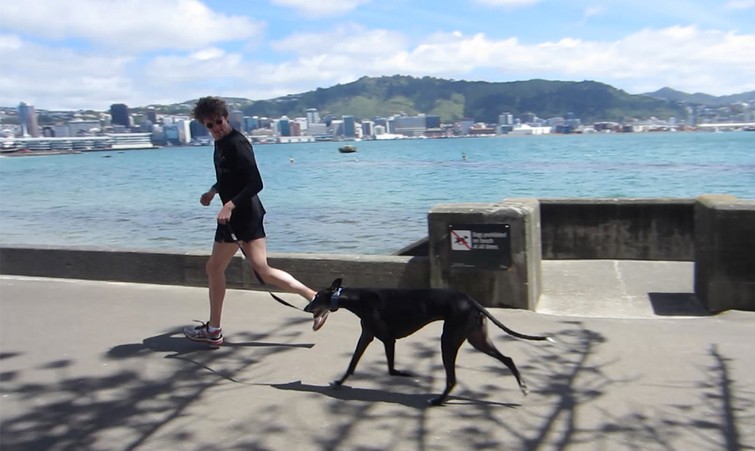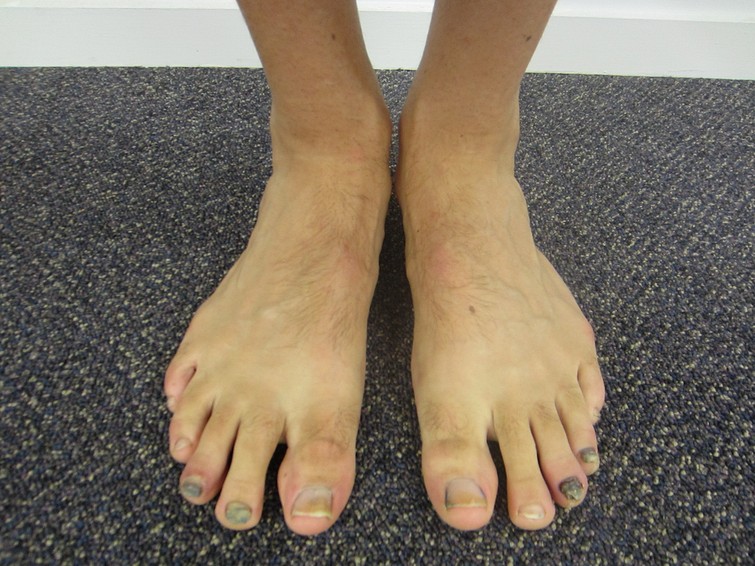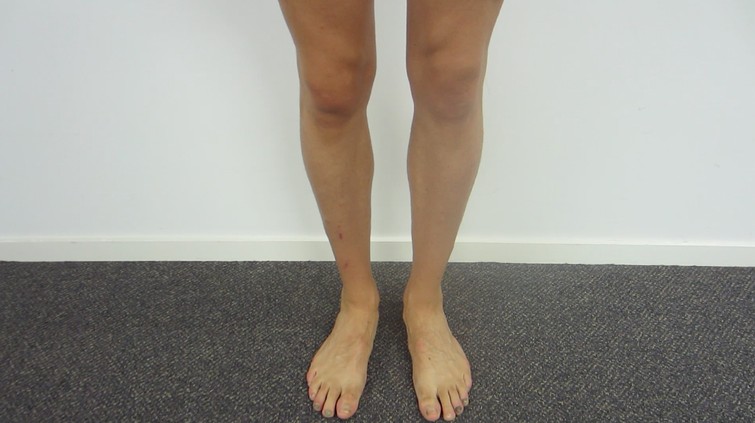Enjoy
Blog
Contents
2.0 An Interview with Ryan Ballinger
March 10 2015, by Jo Bragg
On the morning of Friday the 27th of February artist Ryan Ballinger and I held our second interview (this time over the phone), to discuss his recently completed and up and coming projects.

Still from video work developed out of 30 Upstairs Residency, November 2014.
Jordana Bragg - The last time we spoke was pre-performance of Indoor Record Attempt #3 (Fukuoka revisited) and your dog guided walking/running project as part of your residency with 30upstairs; any updates on these pieces in particular?
Ryan Ballinger - I had just begun the walking/running projects with five dogs around Wellington shortly after our last interview. I have now got a heap of video footage currently in post-production and intending to screen a video work pulled from this project in the spring time of this year at 30 Upstairs.
J - And, Indoor Record Attempt #3 (Fukuoka revisited), how was that performance and the day leading up to it?
R - On the day of the attempt at around 2:30pm I had sushi for lunch, with the performance beginning at 5:30pm. The rich salmon and other marinated meats sat in my stomach and it became apparent about 20 minutes into the attempt that my lunch had not been properly digested, which produced a severe stitch in my abdomen – a stupid mistake on my behalf, and a golden rule for athletes across the board is to not try anything new on race/game or in my case performance day. This meant I had to re-evaluate my strategy, as the pain of the stitch forced me to run at 3-4km an hour slower than my originally intended pace, which is generally my warm up pace (easy running before doing some quick short sharp muscle firing drills).
J - In experiencing severe pain from the beginning, which I presume persisted and amplified throughout the duration of Indoor Record Attempt #3 (Fukuoka revisited), I would like to follow with a few questions around how the audience interprets and engages with your work, in contrast to training/running by yourself.
R - During this most recent attempt I had athletes Grant McLean (marathoner), Anne Hare (finalist in the 5000m at the Atlanta Olympic Games) and artist Caitlin Devoy amongst other generous people supporting me during the performance which was very important for me to able to endure this ordeal psychologically. Admittedly, if I had been by myself I probably would have made the call to stop and attempt it at another time when I was feeling better, but I felt I was in debt to the audience who was there with me.
J - During a performance is there a certain threshold you reach where you have to leave the audience behind? What I mean to say is, to mentally/ physically overcome the pain?
R - Mainly I am just staring at the timer, in deep focus and concentration, analysing my posture and form, making sure I am running ‘economically’ and ‘efficiently’ - counting down until I can stop. When physical pain gets overwhelming I tend to think of people who are in far worse conditions, who are experiencing poverty, pain and disease on a far more severe level to mine, things like cancer patients, people living in severe poverty, people dying in horrifically painful ways and the like.

Current foot situation (bruised toes)
J - In our last interview we discussed audience reaction during Indoor Record Attempt #1 (Fukuoka revisited) which was staged at the opening of your show Poetry in Motion (2012), with two people being moved to tears and another comparing the experience of watching you as similar to witnessing a birth. How would you describe the audience reaction to this third iteration?
R - This time around there were people who stayed for the entire duration, but even then people were constantly leaving the space and returning due to the heat and intensity of what was going on. One person described watching the piece as if they were watching a fight, in the way that violence can be compelling and difficult in that you often don’t want to watch but you just can’t look away. The woman who towelled my legs down and helped me ice them immediately afterwards said I seemed to be experiencing a similar level of pain and displaying a similar dimeaner to that of when she went through two unusually tough labours herself giving birth to her children.
J - It might be an odd assumption to make or parallel to draw upon, but being in labour is potentially and often physically and emotionally demanding/ draining, yet is ultimately a rewarding process. Pain is often framed as inherently negative; does the pain experienced during your work have any physical/emotional cathartic qualities?
R - One thing that is relatively new to me outside of the actual happening of the performances themselves, and more in training for me over the past 12 months, has been that I have become in tune with my physical self much more acutely than ever before. I have been able to become so intimate with my physical self’s condition that I can notice any slight tweak or injury issue arising. I have learnt through my training how to discern the difference between good pain and bad pain and what they mean for me physically. The bad pains being something like a muscle pinching or early warning signs of oncoming injury. The good pains being for example like 'jelly sensations' I feel in my thighs after and during hill training, something I am sure most of us have experienced when walking up a steep hill or climbing a peak. I find it very fascinating to have to dissect these various pains and to figure out what they might mean, as you can imagine they can be quite cryptic.

Video still from Recovery week mindfulness leg exercise, March 2015
J - I suppose audience members witnessing physical signs of your inner conflict and attempts to push past the pain cannot discern this distinction between good and bad as readily. Has there ever been an instance where an audience member interrupted your intention to complete a work, or insisted you stop?
R - Yes actually, this has popped up a couple of times. My first edition of the record attempt annual series which was titled Indoor Record Attempt #1 (Fukuoka revisited) was performed on occasion of the opening of my first decent sized solo show called Poetry in Motion, this was exhibited in late August of 2012. During the performance we had some technical issues with the treadmill which forced me to think on my feet (literally) and start to run around the gallery itself and the atrium of the building on the floor the gallery was situated on - the Saatchi and Saatchi Gallery in Parnell, Auckland. This was to A). keep the kilometers ticking over in the attempt, B). to keep my muscles from cooling down and, C). to allow my assistants who were on hand to assist me with drinks, pain killers, energy gels, towels and sponges while the performance played out. At one point, as I was running out in the atrium, Billy Apple came and stood by and as I ran past him he said 'Ryan, why don't you come back next week and try it again when the machine is fixed?'.
Initially my reaction was a smile and a little bit of a laugh because in my mind there was absolutely no way I could stop now, the art was happening in real time and all I could do was try to hold on for dear life. Billy’s comment touched me in a certain way because it came from his empathy, I think he must have felt sorry for me that it had gone wrong from a technical viewpoint after all the pre-performance hype and maybe too the fact that I was so young at the time and it was my first real solo showing. But in the end this just made the performance a bit more exciting for the audience present and also a bit more exciting for me because like I said, I just had to try and keep with the intention of the work, as it was unfolding. When I had turned around at the end of the atrium and ran back to where Billy was standing he simply said 'this is a fantastic installation Ryan, well done' and walked back into the gallery where the audience was drinking their refreshments and eating their snacks. That was kind of cool for me to hear in a way, as he was quite the influence for me as a young art student. His work, especially the performative pieces he had done in the early decades really hit me and kicked my ass, leaving me flat on the ground. The only other time that someone said something about stopping during a performance was actually in Wellington during the last record attempt piece which was staged in mid December at 30upstairs gallery. About 50 minutes or so into it, while I was in the midst of my agonising stomach pain (which I would never wish upon anyone anywhere ever), the director of the Gallery, Mal Brow, walked up to the treadmill casually and in a quiet voice said 'Hey man if it is too much you can stop, it’s OK! you don't HAVE to do this'.
The interesting thing for me here is that I had the exact same reaction that I gave Billy 2 years earlier in Auckland. I just smiled and nodded to say no, and carried on as if nothing had happened, back onto the pain train. I felt like it would be unfair of me to give up. Unfair on the audience who went out of their way on a beautiful Wellington summers night to be there, unfair to the piece itself - aiming to hold the works integrity, if it has any, and unfair on myself - I think if I gave up because of a pain issue (that I could obviously run through if I just gritted my teeth and went for it) I would reflect on the work and feel like I had gone soft and my confidence with my 'mental toughness' that I had developed through training in cold winter nights in the dark and the rain would be damaged, and this is too important to risk.
J - My intention was to ask if besides working on your performance based practice, do you also do ‘other forms of running?’, but I suppose you may not see such an inherent disconnect between what is culturally considered sport and art. I have heard you use the term field research; can you elaborate on why you use this classification?
R - For me when I started making this type of work that was concerned with sport I didn't participate in any competitive sport myself; I only researched it as an outsider looking in. Then a little bit down the track I registered with a harrier club, or running club if you will, for the very specific reason that my work was asking me to immerse myself in the 'sports' culture more and that meant surrounding myself with 'real life athletes' who train and compete on a regular basis. My initial objective or intention was to train with them and listen to the conversations the athletes had amongst themselves while running, to get used to the language they used - discussing anything from kilometer and mile pace times and racing times, heart rate levels and stats, running shoe brands, other athletes from the local competition right through to the Olympians, types of muscles used for long distance running, massage and acupuncture therapy, other types of recovery. And then of course they would discuss everyday stuff too, like relationships and work life. Very soon I found that much like the art world; the 'running world' has its own language, its own terms, its own set of lingo and its own unique vernacular. Phrases started to appear like 'are you keen for a trot? (a run)' 'would you like to stretch the legs out? (run at a faster pace), words like tempo, endurance, speed work, hill work, conditioning, anaerobic and aerobic, active recovery, long runs, fartlek, intervals, easy-pace, jogging and so on started to be thrown around a lot. So I was using this very specifically and objectively to learn more about the field that I was concerned with in my work. This was just a form of what I more often call physical research, or field research.
J - During this early physical research, what compelled you about the process/action of running?
R - I wanted to tune into the more abstract things about the running. I wanted to hear them all breathing heavy and puffing together and get a feel for what that is like in a pack run of up to 20 runners, I wanted to hear the tempo of our shoes pitter patting the roads or the crunchy noise they made when we ran on gravel in the trails, and the squeaky noise our shoes made when we ran on fresh frosted grass on cold winter mornings. In order for me to gain a real understanding of this type of phenomena I had no choice but to go out and physically carry out the activity with the athletes themselves. It’s a very unique experience. Pack running feels very primal or primitive and rhythmic; in short, it makes me feel very very human.
J - So what’s coming up or have you recently completed?
R - Four weeks ago I won the Taranaki championship for the 5000m race on the track. It was very special for me as both of my parents had won that very race in the past and I smashed my previous personal best time – my coach says that it was the biggest personal best leap forward he has seen in 50 years of coaching but I am not sure whether or not to believe him on that one. It was also on my late mothers would be 50th birthday. I was also recently a pace maker for the Cigna Round the Bays race in Wellington, which is similar to being the rabbit in dog hound racing, and on the 7th of March I will be racing in a half marathon. As well as this I am constantly training, doing Sunday long runs covering up to 30km and weekly mileage of up to 145km per week at the moment, this will increase again after the race on the 7th. This is all endurance training for future performance work and now racing too of course. I will also be contributing a work to the public art event in Wellington called PARK(ing) Day, which is coming up very soon on Wednesday the 11th of March, with a work titled: Drills Exercise #1 and also completing Indoor Record Attempt #4 (Fukuoka revisited) later in the year. I am hoping this will be staged in Wellington so I can redeem myself for the stomach problems I encountered this last attempt. My coach, Barry Magee is going to be putting me through a heavy conditioning phase of training this winter which will provide the endurance and aerobic fitness I need to better my mark in the record attempt work, also cross country season – running in hills, mud and grass will give me the leg strength and ankle strength to be able to advance further in my attempts getting closer and closer to my fathers record time in Fukuoka. I also hope to compose and print a publication I have been initiating in the winter of this year.
J - And what about next year?
R - For my major project of 2016 I will be traveling to East Africa to train and live with the Kenyans for 3 months, I have a few seedlings of ideas as far as what will be produced out of this trip, but will be taking a camera and some drawing tools and seeing what happens, I am also considering post graduate study down in Wellington with Massey University, as I intend to utilise the School of Sport and Exercise facilities and experts on hand. This department of Massey University is located next to the Fine Arts department, how convenient for me!
J - That sounds wonderful, thank you Ryan for speaking with me once again. I wish you the best for all your up and coming projects and anticipate the updates and outcome.
